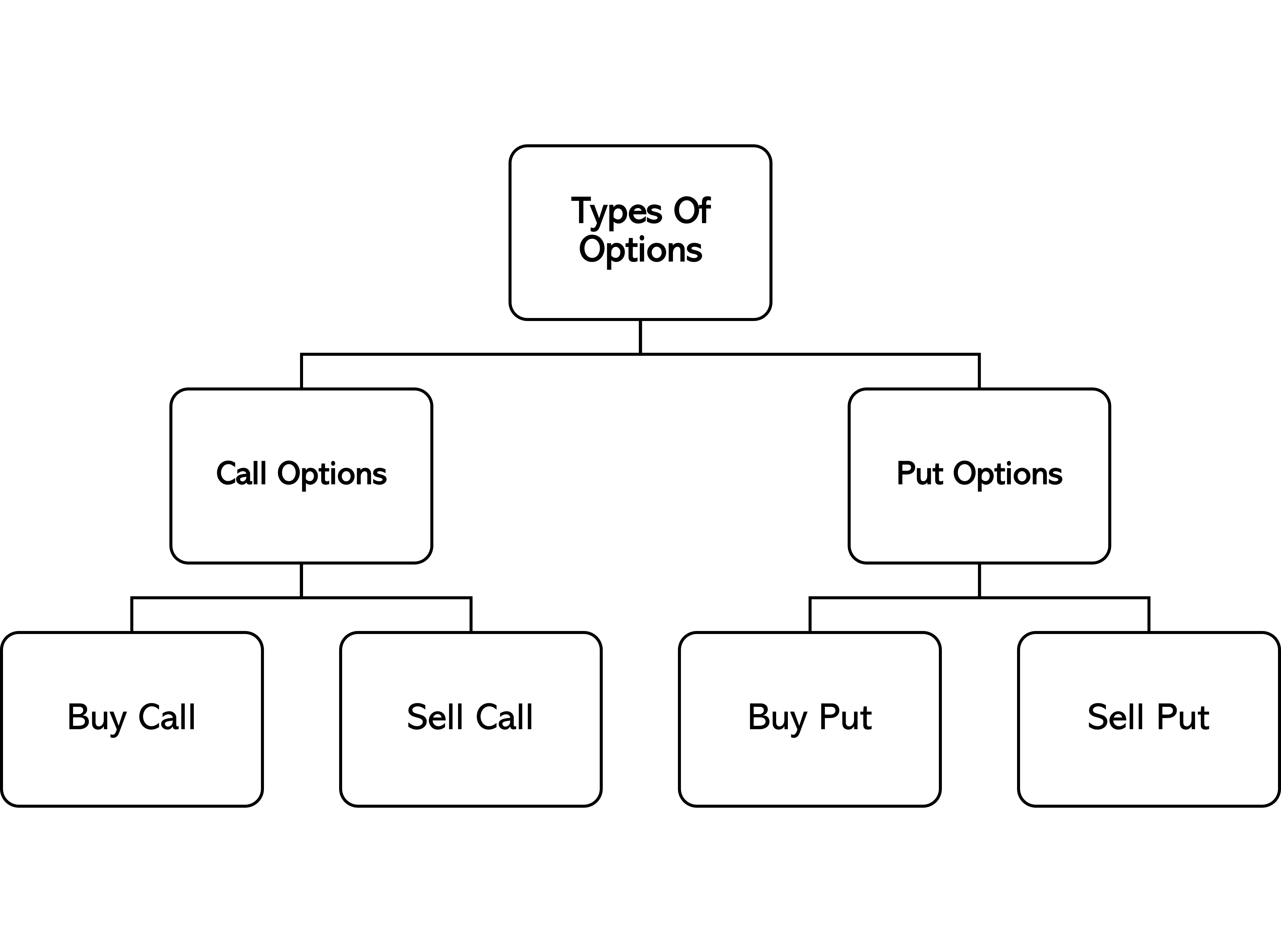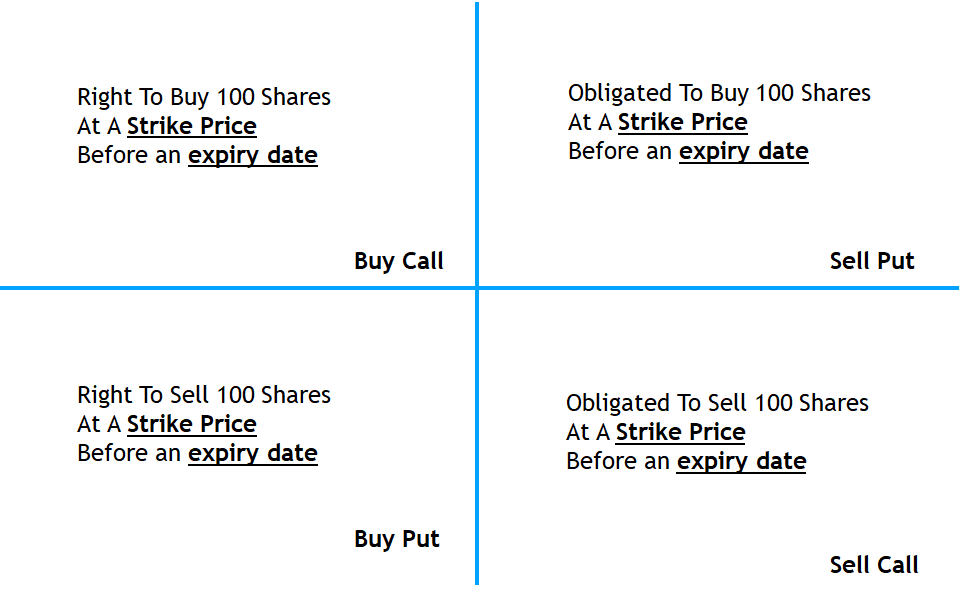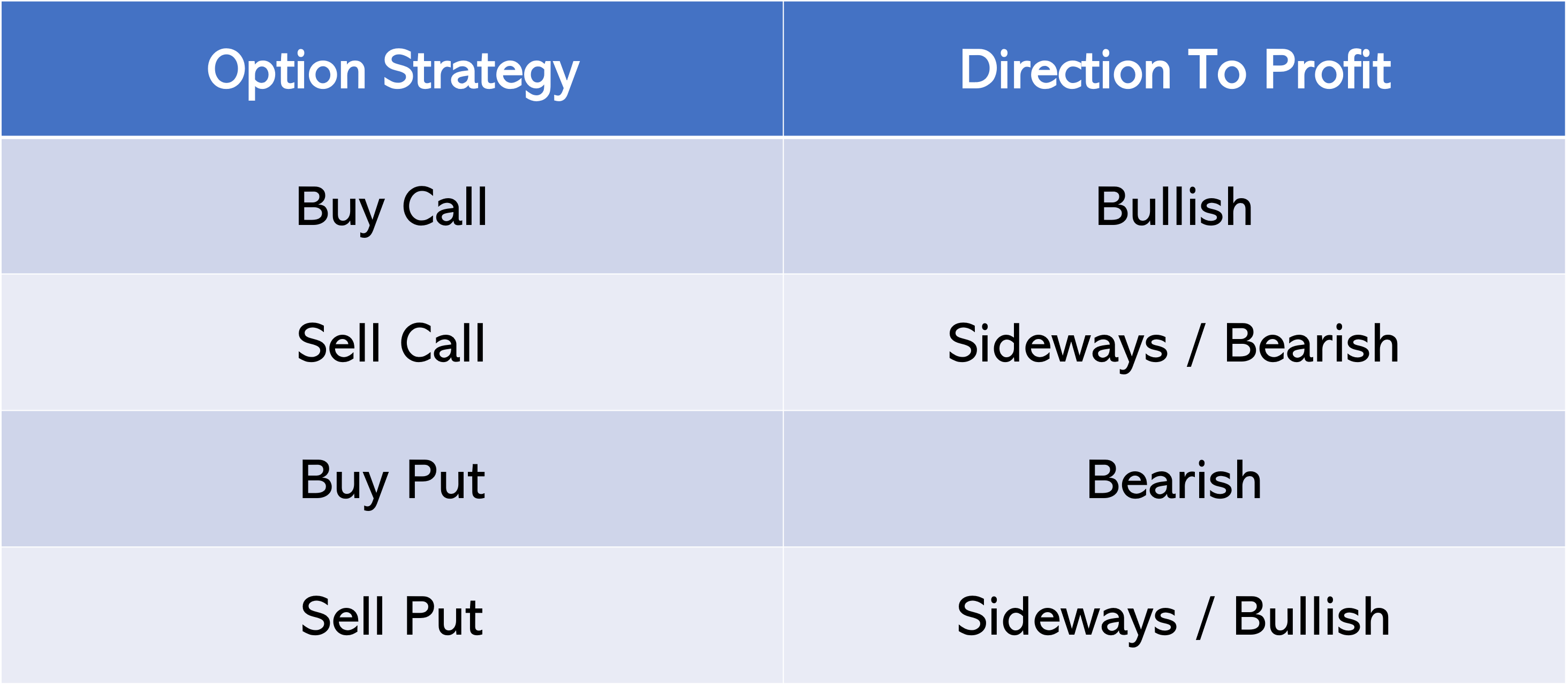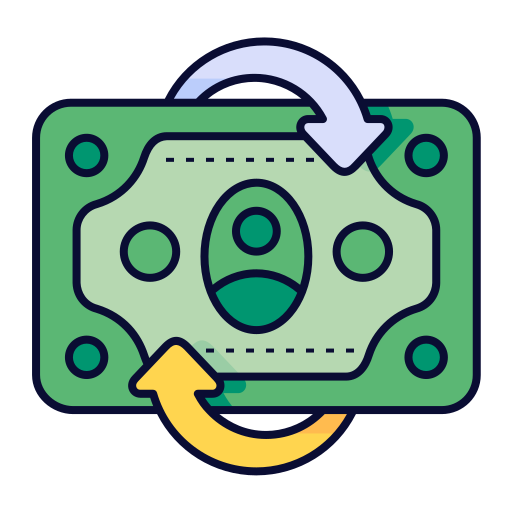Options Basics
Options Investing Hub ⮞ Options Basics
6 RESOURCES
Introduction To Options

The option investing hub is designed to help beginner investors who are looking to use the power of options to boost their portfolio performances.
As an options value investor, options are used for mainly two objectives:
- Leverage (yes, leverage)
- Creating cash flow from investments
In the Options Investing Hub, I will discuss the two core strategies to achieve the two objectives above - as well as the risks involved.
It is important to note that risk is not something that we avoid, but rather it is something we learn to manage. And this is exactly for the Options Investing Hub is for.
So let's dive in - what exactly is an option?
What Is An Option Contract?
An option contract is an agreement between the option buyer and option seller.
(Yes, so literally a contract)
And there are basically two types of contract:

With each contract - there is a buyer and a seller.
As a general rule, remember this:
- When you buy an option, you have the right.
- When you sell an option, you have the obligation.
You might be wondering - a right to do what? or an obligation to do what?
Well, there are four basic option strategies as seen above.

Notice that an option represent 100 shares.
Don't worry if you can't remember these for now.
Because over time, you will understand all of these strategies at your fingertips.
For now, I want to go through certain options' terminologies.
Terminology Of An Option Contract
There are basically five basic terms of an option contract:
- Underlying Stock
- Strike Price
- Date To Expiry
- Option Premium
- Exercise / Expiry / Close Of Option Contract
1. The Underlying Stock
The underlying stock is the stock that is tied in the contract.
Example: If I buy a call option on FB - that means the underlying stock is Facebook.
2. Strike Price
The Strike Price of an option refers to “agreed price” between the option buyer and the option seller.
Example: I bought a call option with a strike price of 50.
This means that I have the right to buy 100 shares at the price of $50.
Example: I bought a put option with a strike price of 45.
This means that I have the right to sell 100 shares at the price of $45.
3. Date To Expiry
Remember that an option contract involves a buyer and a seller.
And the option seller is basically selling a promise.
Its kinda like how an insurance company sells a promise to replace your luggage in the event if your luggage gets damaged during an overseas trip.
However, the insurance company cannot possibly promise you for eternity right?
This is why option contract has an expiry date.
Example: I bought a FB call option with a strike price of $150 and an expiry date of 16 Apr 2021.
This means that I have the right to buy 100 shares of FB at the price of $150 at any time before 16 Apr 2021.
4. Option Premium
Option premium refers to the price of the contract.
Remember how I said option contracts are like insurance?
If you bought an insurance coverage, you need to pay your option premium.
So similar for options, if I were to buy options - I need to pay option premium as well.
And if I were to sell options, then I will receive option premium.
Also, here's the thing about options.
An option represents 100 shares, so if the option contract states that the option premium is $25 - it will be $2,500.
Example: I bought a FB call option with a strike price of $150 and an expiry date of 16 Apr 2021. I paid $25 for this contract.
This means that after paying the $2,500, I now have the right to buy 100 shares of FB at the price of $150 at any time before 16 Apr 2021.
Note that, an option contract is 100 shares. So when an option contract costs $25 - it is actually $2,500.
5. Exercise / Expiry / Close Of Option Contract
There are three ways an option contract could be exited:
- The option gets exercised
- The option expires worthless
- The option is closed
Exercise Of Contract
Let's use a buy call option for example.
Remember that if I buy a FB call option with a strike price of $150, I have the right to buy 100 shares of Facebook at $150 each.
This means that if I exercised my option, I will buy 100 shares worth of Facebook at $150.
Of course, the option is only worth exercising if there's a profit to be made.
Expiry Of Contract
Let's say at the time of expiry - the stock price is at $140.
Would I bother exercising my contract to buy the shares at $150 each?
Well - the answer is no. Since I could buy the shares at $140 straight from the stock market.
So in this case, the option expires worthless.
Closing An Option Contract
The term "close" refers to closing an opened position.
When we buy an option to initiate a position, this is known as "buy to open".
(Which means that we buy the option to open a position)
When we sell an option to initiate a position, this is known as "sell to open".
(Which means that we sell the option to open a position)
So when we close an option contract - it basically means to give the contract to someone else.
Misconception With Selling Options
I needed to add this segment because new options investors commonly get confused with selling options.
They will ask questions like:
Do I need to buy a contract first before I can sell a contract?
Well, the answer is no.
You can simply sell an option contract without owning any contracts first.
This is also known as "sell to open".
The term open means that you opened a position.
As with all open position, you eventually have to close the position.
The act of closing a sell option contract is called "buy to close".
A Quick Recap
We have now gone through the basics of options.
Now, I want to go through these concepts in my brokerage platform so that you can better appreciate what I mean.
Strategy Directions
So we have introduced four basic strategies of options:
- Buy Call
- Sell Call
- Buy Put
- Sell Put
I want to also introduce to you the direction of each strategy.
To put it simply, there are three directions of options:
- Bullish - Stock goes up
- Sideways - Stock moves sideways
- Bearish - Stock goes down
So this table is a summary of the direction of each strategy for you to profit.

You might be thinking why is it possible to make profits "sideways"?
Well - this will be explained in the later sections.
For now, I can only ask that you are aware of these strategy directions.
Quiz Time!
Options can really hurt you if you have a lack of understanding of options.
So here's a quiz to make sure that you understood the concepts above!
What's Next?
In the next chapter, I will first cover about the "the blackhole of options" and how people get lured into using overly fanciful strategies that does not add much value to their portfolio.
Note: One of the biggest reasons why the options hub was built as there were too many people who get burnt because of the lack of knowledge of how options works and its risks involved. This resource hub aims to equip beginner investors with the knowledge of options and how they can manage their risks when investing with options.



